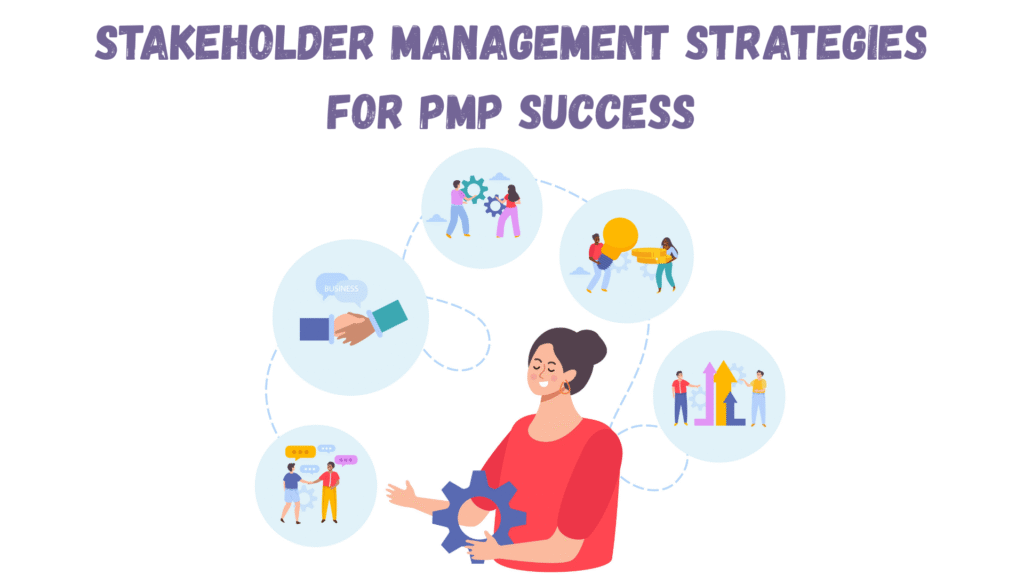
Stakeholder Management Strategies for PMP Success
Every project is shaped by the people involved in it. Some influence decisions directly, others shape perceptions silently, and a few hold the authority to make or break the initiative. In the PMP framework, these people are known as stakeholders. Mastering stakeholder management is therefore one of the most crucial skills for project managers. It helps secure alignment, reduce resistance, and maximize support throughout the project lifecycle.
For PMP candidates, understanding stakeholder management is not only an exam requirement but also a core leadership skill. Let’s explore key strategies, techniques, and tools you must know to excel in both the exam and your career.
Why Stakeholder Management Matters in PMP
Stakeholder management forms a dedicated Knowledge Area in the PMBOK Guide. It ensures that expectations are managed, communication channels remain open, and conflicts are addressed proactively. Projects often fail when stakeholders feel disengaged or misunderstood. On the other hand, projects thrive when stakeholders are engaged from the start, informed consistently, and included in decision-making.
The PMP exam tests your ability to identify, analyze, and engage stakeholders effectively. This requires an understanding of both the processes and the strategies that guide them.
The Four Key Processes in Stakeholder Management
PMP divides stakeholder management into four processes:
1. Identify Stakeholders
This step involves determining who the stakeholders are and documenting their interests, influence, and expectations. Tools such as the Stakeholder Register and Power-Interest Grid help you map stakeholders early in the project.
2. Plan Stakeholder Engagement
Here, you define approaches to engage stakeholders based on their needs, influence, and potential impact on the project. This involves setting communication strategies, conflict resolution methods, and engagement levels.
3. Manage Stakeholder Engagement
In this process, you interact with stakeholders, address concerns, resolve conflicts, and build trust. Effective interpersonal and communication skills are essential here.
4. Monitor Stakeholder Engagement
This final step ensures stakeholder strategies remain relevant throughout the project. It involves assessing effectiveness, adjusting communication, and responding to changes in stakeholder influence or interest.
Essential Stakeholder Management Strategies for PMP Candidates
1. Create a Stakeholder Register Early
The stakeholder register is a living document that includes names, roles, levels of influence, expectations, and communication needs. Updating this document regularly ensures your engagement plan remains aligned with stakeholder realities.
2. Use Stakeholder Analysis Tools
Several analysis tools help you understand stakeholder dynamics:
- Power-Interest Grid: Plots stakeholders based on their influence and interest.
- Salience Model: Categorizes stakeholders by power, urgency, and legitimacy.
- Stakeholder Cube: Expands analysis by considering multiple dimensions such as attitude, influence, and impact.
Using these tools ensures that high-priority stakeholders receive focused attention.
3. Tailor Communication Strategies
Communication is at the heart of stakeholder engagement. For executives, concise dashboards and summaries may be effective. For end users, detailed walkthroughs and training sessions might work better. Tailoring communication to audience needs demonstrates respect and fosters stronger relationships.
4. Build Trust Through Transparency
Stakeholders support projects when they trust the process. Sharing updates consistently, acknowledging risks, and being open about challenges fosters credibility. Transparency reduces resistance and improves collaboration.
5. Engage Stakeholders Continuously
Engagement is not a one-time task. From initiation to closure, stakeholders should be kept involved in discussions, feedback sessions, and decision-making. Early engagement prevents last-minute surprises and increases project buy-in.
6. Apply Conflict Resolution Techniques
Conflicts among stakeholders are natural. PMP emphasizes conflict resolution techniques such as collaborating, compromising, or problem-solving. Choosing the right approach depends on the situation and the level of urgency.
7. Align Stakeholder Expectations with Project Goals
Stakeholders often have varied expectations. A critical role of the project manager is aligning these expectations with project objectives. This alignment ensures project deliverables meet agreed-upon requirements and stakeholders feel their voices are heard.
8. Monitor and Adapt Engagement Plans
Stakeholder needs may shift as projects evolve. A previously passive stakeholder may become active if new requirements affect their domain. Continuous monitoring and adaptation of engagement strategies is therefore vital.
Stakeholder Engagement in Agile Environments
PMP also recognizes Agile and hybrid environments. In Agile projects, stakeholder management focuses on continuous feedback loops, product demos, and collaborative decision-making. Unlike traditional projects, Agile encourages stakeholders to remain deeply involved throughout iterations, ensuring alignment and adaptability.
Exam Perspective: Stakeholder Management in PMP
On the PMP exam, stakeholder management questions often test:
- How to handle conflicts among stakeholders.
- Which communication approach is most effective for specific situations.
- How to update stakeholder registers or engagement plans when project conditions change.
- How to prioritize stakeholders based on their influence and interest.
Candidates should be familiar with practical applications of stakeholder analysis tools and know how to choose strategies aligned with project contexts.
Real-World Example: Stakeholder Management in Action
Consider a project to implement a new software system in a hospital. Key stakeholders include doctors, nurses, administrative staff, patients, and IT vendors.
- Doctors and nurses require user-friendly systems and minimal disruption to patient care.
- Administrators focus on cost, compliance, and smooth operations.
- Patients value security and data privacy.
- IT vendors care about implementation timelines and technical requirements.
By identifying these groups early, tailoring communications, and continuously seeking feedback, the project manager ensures smoother adoption and stronger stakeholder support.
Conclusion
Stakeholder management is the art and science of engaging people effectively in projects. For PMP candidates, mastering these strategies strengthens both exam performance and real-world project delivery. By identifying stakeholders early, using analysis tools, tailoring communication, and maintaining transparency, project managers create environments where collaboration thrives.
When stakeholders feel heard, respected, and involved, projects move forward with stronger momentum and reduced resistance. As you prepare for the PMP exam, remember that behind every process, every tool, and every deliverable lies the simple truth that people drive projects forward.